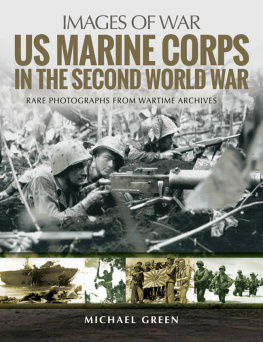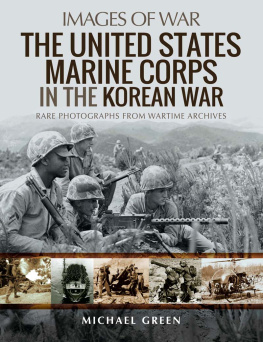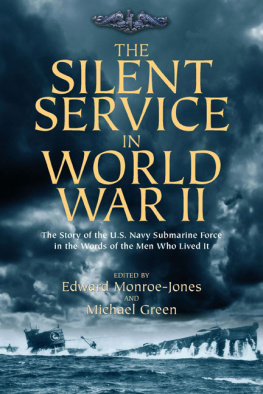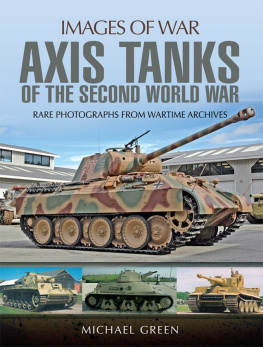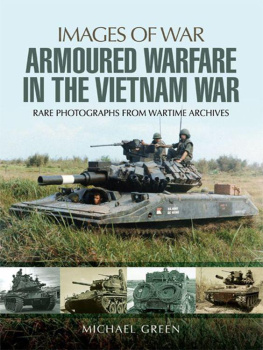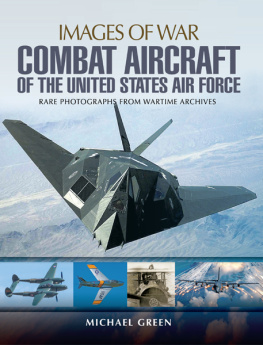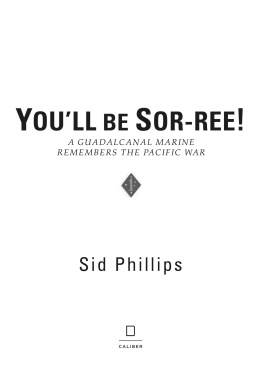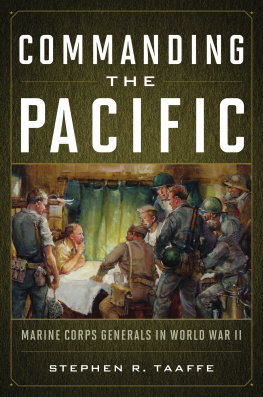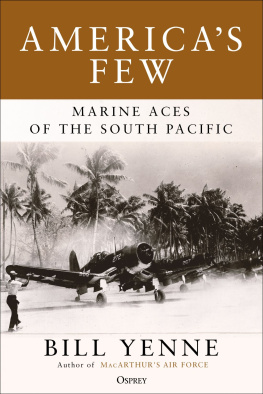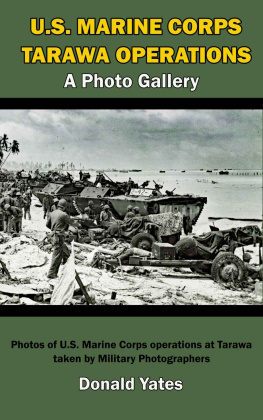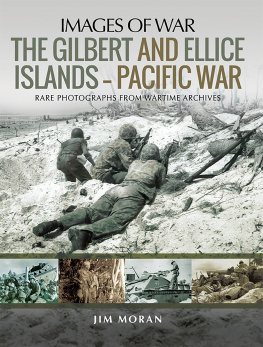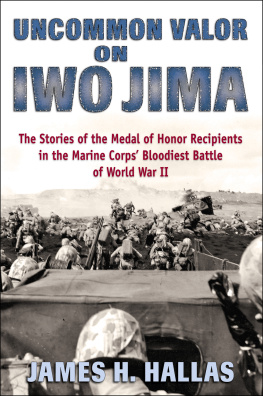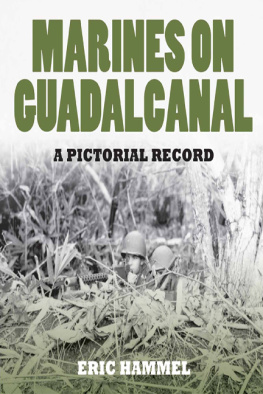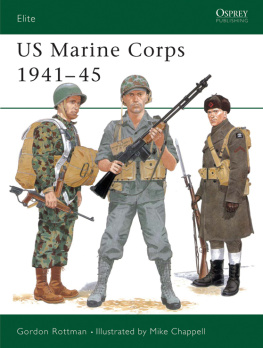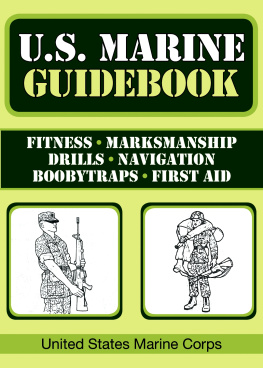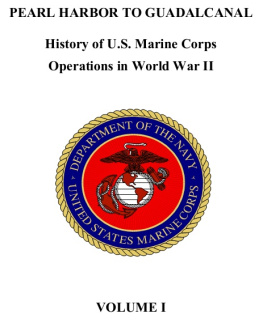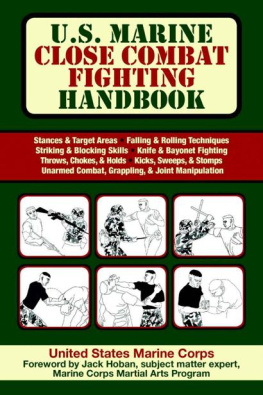IMAGES OF WAR
UNITED STATES MARINE CORPS IN THE SECOND WORLD WAR
RARE PHOTOGRAPHS FROM WARTIME ARCHIVES
Michael Green
First published in Great Britain in 2018 by
PEN & SWORD MILITARY
An imprint of
Pen & Sword Books Ltd 47 Church Street
Barnsley
South Yorkshire
S70 2AS
Copyright f Michael Green, 2018
ISBN 978-1-52670-250-0
eISBN 978-1-52670-252-4
Mobi ISBN 978-1-52670-251-7
The right of Michael Green to be identified as author of this work has been asserted by him in accordance with the Copyright, Designs and Patents Act 1988.
A CIP catalogue record for this book is available from the British Library.
All rights reserved. No part of this book may be reproduced or transmitted in any form or by any means, electronic or mechanical including photocopying, recording or by any information storage and retrieval system, without permission from the Publisher in writing.
Pen & Sword Books Limited incorporates the imprints of Atlas, Archaeology, Aviation, Discovery, Family History, Fiction, History, Maritime, Military, Military Classics, Politics, Select, Transport, True Crime, Air World, Frontline Publishing, Leo Cooper, Remember When, Seaforth Publishing, The Praetorian Press, Wharncliffe Local History, Wharncliffe Transport, Wharncliffe True Crime and White Owl.
For a complete list of Pen & Sword titles please contact
PEN & SWORD BOOKS LIMITED
47 Church Street, Barnsley, South Yorkshire S70 2AS, England
E-mail:
Website: www.pen-and-sword.co.uk
Contents
Dedication
The author would like to dedicate this book to Marine John Basilone, winner of the Medal of Honor and the Navy Cross during the Second World War.
Foreword
I n most respects, the modern United States Marine Corps remains a creation of the Second World War. The unprecedented expansion of the corps in size, composition and mission orientation brought major challenges to a relatively small military organization.
The short pre-war period saw the corps forming its first two divisions and two aircraft wings mere months before the United States entered the war. What followed was a six-fold enlargement by 1944 to field the six divisions, four wings, and corps and force troops to support two amphibious corps, which were the Fleet Marine Forces highest combat formations. At the same time, Marines continued to form detachments for all US Navy ships of cruiser size and above, and secure naval bases at home and overseas. The corps top strength was 471,905.
As usual, numbers alone scarcely suffice to tell the story. The Marine Corps provided specialized amphibious forces in the Pacific, making significant changes to equipment, organizations and doctrine to meet the challenges posed by the air, sea and land forces of the Japanese Empire. In doing so, the concept of close air support advanced as were naval fire support, amphibious vehicle development and a host of tactics, techniques and procedures, most of which remain today in recognizable form.
Michael Greens succinct history of the major Second World War operations in which the Marine Corps participated contributes well to our understanding of why such a wholesale organizational evolution took place at a crucial time in our national epic. In the eyes of the American public, the Marine Corps was second to none and seemed destined for a long and useful career.
Kenneth W. Estes
Lieutenant Colonel, US Marines
Acknowledgements
T he bulk of the historical images in this work came from the files of the United States Marine Corps Historical Center and will be credited USMC. As with all published works, authors depend on friends for assistance in reviewing their work. Especially helpful as always were Randy Talbot and Peter Shyvers.
Chapter One
The Opening Acts
O n Sunday morning, 7 December 1941, there were approximately 4,500 Marines stationed at Naval Station Pearl Harbor and the surrounding area. About 900 of those Marines were stationed on board warships of the United States Pacific Fleet that were docked at Pearl Harbor.
In addition, there was a Marine Corps aviation unit with forty-seven fighters and dive-bombers at Marine Corps Air Station Ewa. When the surprise Japanese aerial attack on Pearl Harbor began on 7 December 1941 at 7.55 am, Ewa was their first target. All the Marine Corps aircraft were destroyed during the attack.
At the Marine Barracks at Pearl Harbor, Samuel R. Shaw, who commanded one of the two barracks companies, remembered that fateful Sunday morning in his oral interview filed in the Marine Corps Historical Collection:
The boat guards were in place, and the music was out there, and the old and new officer of the day. And we had music, and a hell of a fine sergeant bugler who had been in Shanghai. He would stand beside the officers of the day, and there came the airplanes, and he looked up and he said, Captain, those are Japanese war planes. And one of the two of them said, My God, they are, sound the call to arms. So, the bugler started sounding the call to arms before the first bomb hit.
Only four shore-based Marines were wounded during the Japanese attack on Pearl Harbor. Of the Marines posted to the US Navy warships at the naval base during the attack, 108 were killed and another 49 wounded.
Fears abounded following the Japanese aerial attack on Pearl Harbor. Many assumed that this attack would be followed by an invasion of the Hawaiian Island of Oahu, location of Naval Base Pearl Harbor. However, that was never a Japanese plan. Concerns about the possibility of Japanese landings did not subside until 1943.
More Japanese Attacks
Also on 7 December 1941, Japanese aircraft attacked the American protectorate of Guam, one of the Marianas Islands. A few days later a force of approximately 4,000 Japanese soldiers landed on the island and quickly overwhelmed the 145 Marines assigned to defend Marine Barracks, Naval Station Guam. Thirteen Marines were killed and thirty-seven wounded in the lop-sided one-day struggle.
A less dramatic engagement between the Japanese Navy and the Marine Corps also took place on 7 December 1941. Two Japanese destroyers bombarded the Central Pacific island of Midway for fifty-four minutes. The coastal artillery guns of a Marine Corps defence battalion engaged one of the destroyers without striking it. Two Marines died during that brief struggle in what was a very minor footnote in the history of the Second World War.
The Battle for Wake Island
Japanese aerial attacks were launched on the American-occupied Central Pacific island of Wake between 7 and 10 December. On 11 December, a Japanese force of three cruisers, six destroyers and a number of troop transports attempted to land an invasion force of 450 troops on the island.
Unfortunately for the over-confident Japanese invasion force, the approximately 500 Marines of a defence battalion tasked with protecting Wake and surrounding islands were better armed than their Guam comrades. They had anti-aircraft guns, coast artillery guns and a few Wildcat fighters in support. They would employ these weapons to take a heavy toll on the enemy armada, sinking two destroyers and damaging a cruiser.
From a wartime report by a Marine Corps officer who commanded one of the coast artillery batteries at Wake on 11 December comes this extract describing what took place when one of the Japanese warships escorting the troop transports came within range of his guns:

